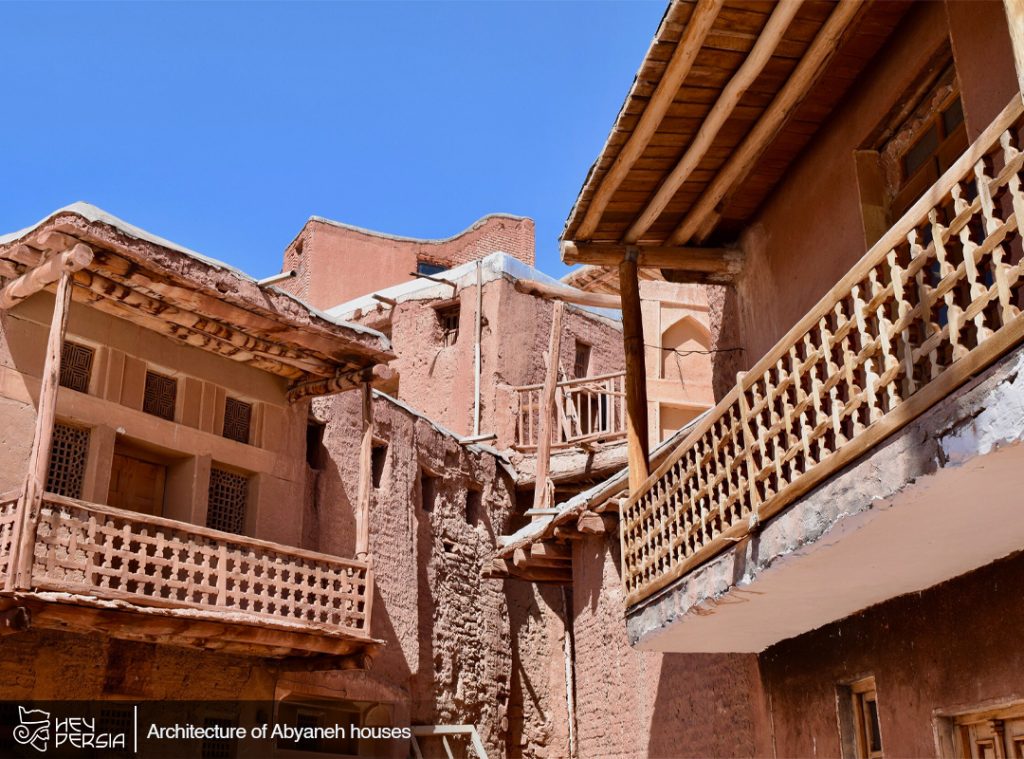Abyaneh village, nestled in Natanz town, within the Isfahan Province of Iran, stands as a captivating testament to the country’s rich cultural history and architectural uniqueness. With its iconic red mud-brick houses, distinct lifestyle, and deep-rooted traditions, Abyaneh offers a mesmerizing journey back in time. Let’s delve into the enchanting details of this picturesque village. Stay with Hey Persia to learn more.
Historical Significance of Abyaneh village in Iran
Abyaneh’s history dates back over a thousand years, making it one of Iran’s oldest inhabited villages. Its isolated location in the Karkas Mountains allowed the preservation of its distinct culture and architecture. The village’s history is evident in its architecture, with buildings that have withstood the test of time, showcasing the enduring craftsmanship of its people.
Architectural Marvel: The Red Village
A defining feature of Abyaneh is its unique red mud-brick architecture. The reddish hue, derived from the local soil, lends the village its distinctive appearance. The narrow winding lanes are flanked by these crimson buildings, creating a harmonious blend with the surrounding landscape. This aesthetic unity between the village and nature has earned Abyaneh the title of “The Red Village.”

Traditional Attire at Abyaneh village in Iran
Abyaneh’s residents, known as Abyunaki, continue to proudly wear traditional clothing, which adds to the village’s unique charm. Women wear colorful floral scarves and dresses adorned with intricate patterns, while men sport distinct caps and garments. This commitment to preserving traditional attire showcases the village’s dedication to its heritage. You may learn about the Persian fashion style as a perfect cultural aspect as well.
Living Cultural Heritage
The village’s residents take immense pride in their cultural identity, and this pride is evident in their daily lives. Traditional customs, rituals, and festivals are an integral part of Abyaneh’s fabric. Visitors often have the opportunity to witness traditional ceremonies, such as weddings and religious gatherings, that offer insights into the community’s strong sense of belonging.
Warm Hospitality of Abyaneh village in Iran
Abyaneh is renowned for its warm hospitality towards visitors. The locals’ friendliness and openness contribute to a welcoming atmosphere, allowing outsiders to experience the village’s authenticity firsthand. It’s not uncommon for villagers to invite tourists into their homes for tea, providing an opportunity for cultural exchange.

Rich Religious Heritage
Religion plays a significant role in the lives of Abyaneh’s inhabitants. The village is home to several historical mosques and shrines that have become centers of spiritual and communal activities. The Jameh Mosque, with its intricate architecture, is a prime example of the religious heritage that permeates the village.
Culinary Delights
A trip to Abyaneh would be incomplete without savoring its local cuisine. Traditional dishes offer a taste of authentic Persian flavors. From aromatic stews to saffron-infused rice, the local gastronomy reflects the village’s connection to the land and its bountiful produce.
Challenges and Conservation Efforts
While Abyaneh’s isolation has helped preserve its cultural identity, the village also faces challenges in the modern era. As younger generations migrate to cities in search of better opportunities, efforts are being made to ensure the continuity of Abyaneh’s traditions and way of life. Conservation projects are also underway to maintain the integrity of the village’s architecture and infrastructure.
Tourism and Preservation
Abyaneh’s distinctive charm has drawn tourists from around the world. While tourism provides economic benefits to the village, there is a delicate balance to strike between welcoming visitors and preserving the authentic atmosphere. Sustainable tourism practices are crucial to ensuring that Abyaneh’s cultural heritage remains intact for generations to come.
Conclusion
Abyaneh village stands as a living testament to the rich tapestry of Iran’s cultural heritage. Its red mud-brick houses, traditional attire, warm hospitality, and deep-rooted customs offer an immersive experience into a bygone era. As Abyaneh navigates the challenges of the modern world, its commitment to preserving its unique identity continues to captivate those who seek to uncover the hidden gems of Iran’s history





